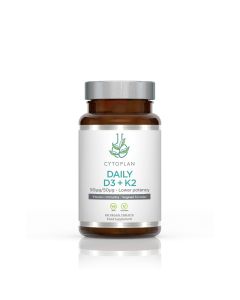Why are some of the levels of vitamins and minerals so much higher than the NRVs?
NRV stands for Nutrient Reference Value and a level is set for 13 vitamins and 14 minerals for the purposes of food labelling, including supplements. An NRV is the level of a nutrient that is deemed adequate to meet the requirements of an average healthy adult to prevent deficiency. This means it refers to the absolute minimum amount of a certain vitamin/mineral that a person requires and was never intended as anything more than a safety net. When the National Academy of Sciences drew up the NRVs it never claimed these represented nutrient intakes designed to achieve optimal health and the optimal amount can far exceed the NRV. The NRV should therefore be used as a guide to help prevent deficiency only.
The first NRVs (formerly RDAs) were set in 1941 to prevent specific nutrient-deficiency diseases – for example, scurvy (vitamin C deficiency), pellagra (niacin deficiency) and beriberi (vitamin B1 deficiency) and, indeed these were highly effective. For instance, taking 30mg of vitamin C per day will prevent scurvy, although research suggests that up to 1000mg is needed to support optimal immune function, tissue repair and antioxidant activity.
Being mindful of the safe upper levels are also advised – these are set a lot higher than the NRVs and so levels in supplements should always sit between the NRV and safe upper limit. So, although you may see a high % of NRVs on the labels of some our products, we ensure that the levels of nutrients in all our products are both safe and effective and have been formulated with optimal health in mind, not merely the prevention of deficiency.
With regard to vitamin D3, it was deemed that the average person required 5µg daily to prevent deficiency and to safeguard against the development of rickets. This NRV was recommended based an outdated understanding that vitamin D is only required for calcium absorption and bone health. We now have a much broader understanding of the extensive roles that vitamin D plays in health and protection from disease and experts propose much higher levels to support optimal health. The NHS alone now recommends we take an amount over the NRV (10µg) - providing 200% of the NRV.
Equally, NRVs for the B vitamins are really the minimum amount and higher levels have been shown to be beneficial. For example, the NRV for B12 (2.5 µg) is far below the amount used in studies to support optimal health and the average person can take many more times the NRV without reaching the upper limit.
The other major weakness with current NRVs is that they are average values and are set across populations which does not consider the needs of individuals, where dosage requirements for some may be higher in certain circumstances.







